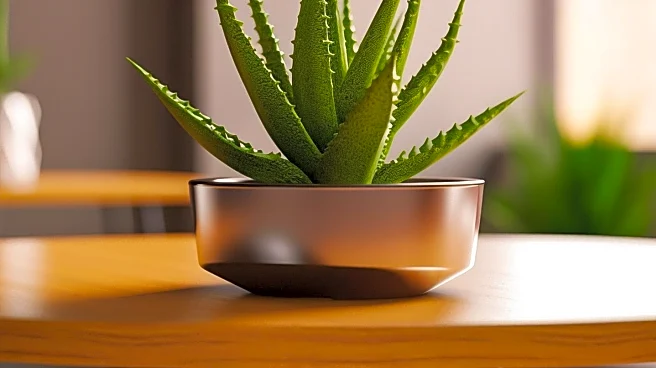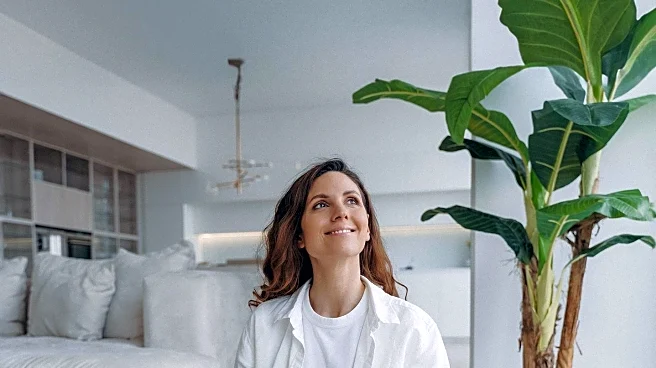What's Happening?
Stanford University researchers have developed the Nature View Potential tool to determine the optimal amount of indoor greenery for enhancing well-being. The study involved 412 volunteers who were assigned
to digital conference rooms with varying levels of indoor plants. Participants completed professional tasks and filled out well-being questionnaires before and after stressors were introduced. The research found that a room with about 20% greenery provided the greatest boost in perceived restoration and sense of belonging. However, rooms with excessive greenery, around 60%, increased stress levels. The study highlights the importance of feeling connected to nature, as those who felt in tune with the plants experienced more mental and physical benefits.
Why It's Important?
The findings from Stanford's study have significant implications for various environments, including offices, classrooms, hospitals, and assisted living facilities. Indoor plants have been shown to boost productivity, reduce stress, and improve mental health. In educational settings, they enhance concentration and test scores, while in healthcare environments, they aid in faster recovery and reduced medication use. The Nature View Potential tool can assist designers in creating spaces that maximize the benefits of indoor greenery, potentially leading to improved well-being and productivity across different sectors. This research underscores the balance needed between nature and indoor environments to optimize health benefits.
What's Next?
Researchers aim to use the Nature View Potential tool to help designers and architects incorporate the optimal amount of indoor greenery in various settings. This could lead to new standards in building design that prioritize mental and physical health benefits. As the popularity of indoor plants continues to grow, especially among Millennials and Gen Z, the tool may become a valuable resource for creating spaces that enhance well-being. Future studies may explore the specific types of plants that offer the most benefits and how different environments can be tailored to individual needs.
Beyond the Headlines
The study raises questions about the psychological impact of indoor environments and the role of nature in human well-being. It suggests that while nature is beneficial, too much can be overwhelming, highlighting the need for balance. This research could influence cultural perceptions of indoor spaces and encourage a more mindful approach to incorporating nature into daily life. The findings may also lead to discussions about the ethical considerations of manipulating environments for health benefits and the potential long-term effects on mental health.












